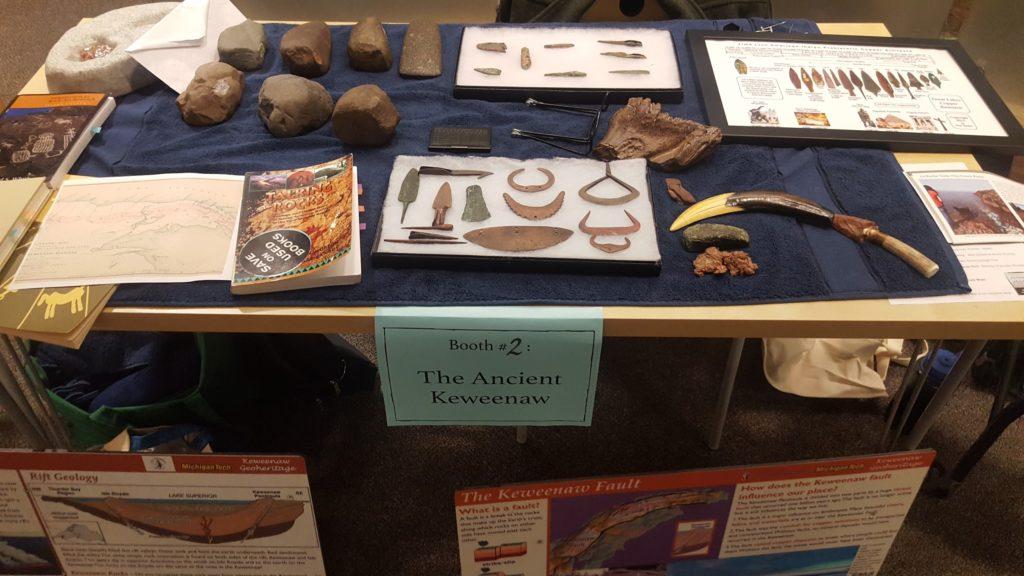Moms and dads chased their kids around, jumping from booth to booth just waiting to see the next exhibit. There were a total of 12 booths piled up with artifacts, smiling children and passionate leaders. Wide-eyed children hunted down the footprints of bigfoot hidden around the museum, a scavenger hunt activity that the NMU Anthropology Club planned.
The Marquette Regional History Center (MRHC) celebrated International Archaeology Day from noon to 3 p.m. on Saturday for the Archaeology Fair. The MRHC offered a chance for families to bond in a new way.
The exhibit called “Excavation of a Beaver Island Privy” at booth 9 showed historical findings that were displayed across the table. Max Spiessl, one of the booth leaders, explained that a privy is an outhouse. Over the summer, a group he was a part of traveled to a privy on Beaver Island.
“It was a very interesting excavation,” Spiessl said.
Booth number six, “How Old is that Bottle?” ran by archaeologist Bill Van Kosky, was adorned with blue and brown tinted glass bottles, ranging from the late 1800’s to the early 1900’s. He spoke of his journeys and findings, his eyes lighting up as he reiterated every story.
Kosky said one of his most notable findings was discovering an old soda bottle from Negaunee.
“What makes it cool is it turns out the exception is rare. I eventually learned about the company it’s from and it was dating back to the 1860’s,” Kosky said.
Kosky had some pictures on display that were taken of him as he stood in holes formed in the ground. Pulling out a tall, metal T-bar, he explained that on these archaeological hunts, the T-bar-like tool is used to stick into the ground in hopes of actually hitting nothing, because that means a hole has been found and it wasn’t formed naturally, rather, man-made.
Kosky added when he’s digging in search of a hole, it’s also possible to hit a glass bottle or an item that could be an archaeological finding. Kosky said he specializes in interpreting bottles from the year 1860 up to 1920.
“To me, the whole hobby is not a matter [of] just accumulating the bottles, but to learn as much as I can about how they were made, where they were made, and about the products that were put into it and the technology behind them,” Kosky said. “You can treat the hobby as superficial, or get into it deep. I get into it deep.”
Booth number two “The Ancient Keweenaw” host and Houghton native Bob Wheeler, showed displays from Michigan Technological University (MTU). He also showed some of his man-made shaped rocks, either purchased or found, that were shaped a certain way because of their intended purpose back then, for example, to create weapons out of copper and other minerals. These “tools” had finger grooves: one flat surface and one scratched surface. All intended to shape and make weapons and other necessary tools, Wheeler said. One was in the shape of an axe head, and most of these were found by farmers in their fields, Wheeler said.
Old findings met passionate people, and new things were discovered by intrigued children. They hopped around the museum scavenging for Bigfoot and danced over to the giftshop. They “oohed” and “ahed” and held prickly purple gemstones, begging for just a few more dollars to spend. The necklace picked out would soon dangle from their chest in remembrance of Archaeology Day many years ago, when, perhaps, they take their own kids to discover what they did, all in the city of Marquette.






























